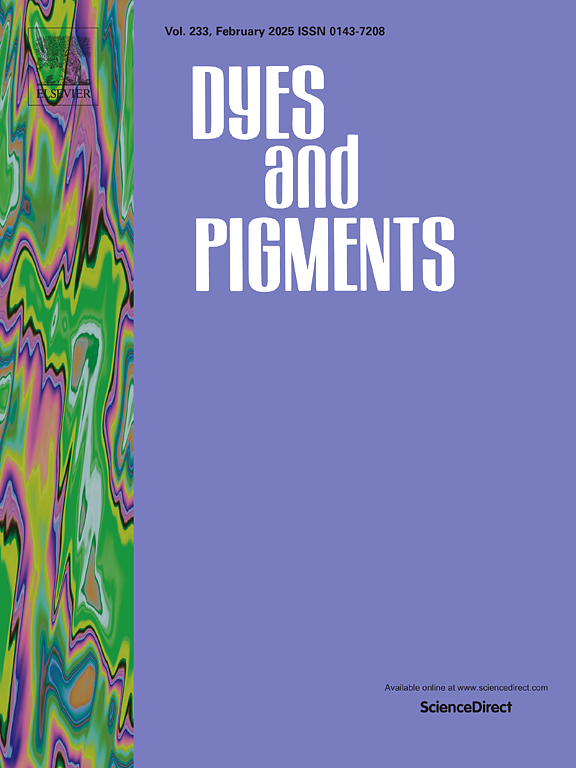Shamrock-shaped nonfullerene acceptors containing nonhalogenated end groups for high-voltage organic photovoltaics
IF 4.1
3区 工程技术
Q2 CHEMISTRY, APPLIED
引用次数: 0
Abstract
Developing new material systems simultaneously possessing high open-circuit voltage (VOC) and power conversion efficiency (PCE) has consistently been a focal research. Recently, our group successfully obtained a novel A-DA'D-A type shamrock-shaped NFA via utlizing a large conjugated acenaphtho [1,2-b]quinoxaline imide (AQI) unit as central core (A′ unit) and fluorinated 1,1-dicyanomethylene-3-indanone (IC) as end groups, and the final molecule AQI4 exhibited a PCE of 18 % with a VOC of 0.95 V. To further extend the familly of shamrock-shaped NFAs and upgrade their photovoltaic properties, herein, another shamrock-shaped NFA containing non-halogenated end group IC was synthesized and named as AQI1. The reasonable cooperation of AQI and IC could facilitate to obtain an upshifted LUMO energy level, resulting in a decreased energy loss in organic photovoltaics (OPVs). Using the classic p-type polymer PM6 and a benzotriazole-based linear polymer PE4 as donors, both devices can achieve high VOC of 1.06 V and 1.02 V respectively. Finally, PM6:AQI1 and PE4:AQI1 combinations realized PCEs of 11.3 % and 13.7 % respectively, suggesting that benzotriazole-based polymers might be better choice to blend with shamrock-shaped NFAs. These results indicate that shamrock-shaped NFAs with nonhalogenated end groups may be a feasible and potential design strategy to achieve low-cost and high-VOC OPVs.

求助全文
约1分钟内获得全文
求助全文
来源期刊

Dyes and Pigments
工程技术-材料科学:纺织
CiteScore
8.20
自引率
13.30%
发文量
933
审稿时长
33 days
期刊介绍:
Dyes and Pigments covers the scientific and technical aspects of the chemistry and physics of dyes, pigments and their intermediates. Emphasis is placed on the properties of the colouring matters themselves rather than on their applications or the system in which they may be applied.
Thus the journal accepts research and review papers on the synthesis of dyes, pigments and intermediates, their physical or chemical properties, e.g. spectroscopic, surface, solution or solid state characteristics, the physical aspects of their preparation, e.g. precipitation, nucleation and growth, crystal formation, liquid crystalline characteristics, their photochemical, ecological or biological properties and the relationship between colour and chemical constitution. However, papers are considered which deal with the more fundamental aspects of colourant application and of the interactions of colourants with substrates or media.
The journal will interest a wide variety of workers in a range of disciplines whose work involves dyes, pigments and their intermediates, and provides a platform for investigators with common interests but diverse fields of activity such as cosmetics, reprographics, dye and pigment synthesis, medical research, polymers, etc.
 求助内容:
求助内容: 应助结果提醒方式:
应助结果提醒方式:


